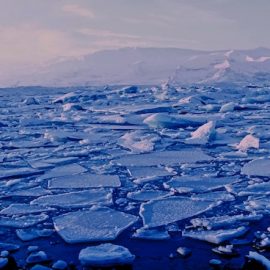

This article is an excerpt from the Shortform book guide to "Apocalypse Never" by Michael Shellenberger. Shortform has the world's best summaries and analyses of books you should be reading.
Like this article? Sign up for a free trial here.
How can we save the planet? What’s wrong with most of the current solutions?
Though it’s become widely accepted that climate change is real, the questions still remain of what steps we should take to fix the damage and whether they’ll be enough. In Apocalypse Never, Michael Shellenberger explains why he thinks most initiatives are misguided and provides his own proposals.
Read more to learn Shellenberger’s analysis of the climate problem and to discover the fix he thinks we need.
Saving the Planet (Including the Humans)
The core of existential environmental dread revolves around the idea that humans are actively killing the planet. Shellenberger concedes that some degree of concern is legitimate, and certain measures should be taken to prevent a crisis. So, how can we save the planet from any future doom? In order to remove a certain level of panic from the environmental discussion, Shellenberger addresses the issues and misperceptions around the mass extinction of species, the loss of rainforests, and the amount of non-degradable waste such as plastic that we release into the environment.
Conservationists warn that species are now going extinct faster than at any time in the past several million years. Authors who characterize this as the “Sixth Extinction” argue that mass extinctions are not only humanity’s fault but that they also endanger the human race’s survival by toppling the delicate natural systems on which our civilization depends. However, Shellenberger claims that alarmist extinction rate projections are based on a flawed “species-area model” developed in the 1960s that made faulty assumptions about how much habitat is needed for species to survive.
| Human Activity as the Cause of Mass Extinction The author of The Sixth Extinction, Elizabeth Kolbert, compares the present rate of species loss to that of five other mass extinction events that we know of in Earth’s history, of which some were sudden, while others were gradual. In all cases, over 75% of species on the planet were wiped out by environmental changes that occurred too quickly for evolution to adapt. Kolbert and others like her argue that human-driven climate change is creating a similar crisis through habitat destruction, ocean acidification, and the disruption of native ecologies by invasive species that humans transplant. The Species-Area Relationship model that Kolbert and many biologists use to predict species extinction rates (and that Shellenberger objects to) is a mathematical relationship between the size of a habitat and the number of species it ought to support. The model isn’t as static as Shellenberger suggests but undergoes revision and refinement to integrate new data as it emerges. The fact scientists continue to question and study the model’s assumptions and implications doesn’t invalidate it as a predictive tool in the field of ecological conservation. |
Deforestation
Shellenberger says that habitat loss and declining species populations are more important metrics to consider and that they aren’t the result of “evil corporations” but of the actions of people simply struggling to survive. In Brazil and the Congo, rainforests are disappearing in order to make room for farmland and to use the chopped-down trees for fuel.
A misunderstanding that Shellenberger speaks to specifically is the idea that rainforests are vital to providing the planet’s oxygen and removing carbon dioxide from the air. Forest ecosystems actually consume as much oxygen as they produce. And, while plants do store carbon, they don’t to the extent that many activists claim.
Shellenberger contends that more efficient use of already-cleared lands can halt civilization’s march into old-growth forests that are in most need of conservation.
Plastic in the Oceans
Of equal or greater concern are the oceans, where wildlife is endangered by the vast amount of plastic waste that gets eaten by birds, fish, whales, and marine turtles. Though much of the plastic comes from torn and discarded industrial fishing nets, a great deal more finds its way there by land from countries without strong waste management infrastructures.
Shellenberger notes that the invention of plastic resulted in the cessation of the widespread slaughter of animals such as elephants and tortoises. Today there is a push toward bioplastics, but the alternatives to petroleum-based plastic aren’t necessarily better for the environment. Bioplastics require more water, farmland, and energy to produce than normal plastic, and are harder to reuse and recycle. In those respects, green alternatives can be a step in the wrong direction. The environmental cost of petroleum plastic is actually less than our other current options.
| The Environmental Impact of Plastic Waste In The World Without Us, Alan Weisman explains that because plastic doesn’t biodegrade, even if we were to stop production today, the plastic we’ve already created will eventually find its way into every corner of the ecosystem. Forces of erosion will eventually break plastic down into smaller and smaller pieces that can be easily transported by water and air—and ingested by microbes and plankton. Because plastic is such a relatively new invention, its long-term effects on the environment have yet to be fully determined. Shellenberger’s views on plastic’s benefits go against environmentalists’ concerns about the enormous amount of plastic waste produced every year, though progress has been made in finding ways to organically break down and recycle certain types of plastic. Bioplastics also don’t break down in landfills—they only degrade in industrial composting facilities. In their overall lifetime, bioplastics have a greater carbon footprint than single-use plastics and add nothing of value to composted soil. At present, the only actionable way to mitigate endless plastic waste may be a cultural shift toward reusable containers and packaging. |
The Human Cost
Shellenberger argues that first-world countries are shifting the burden of managing the climate onto nations in the developing world in a form of environmental colonialism. Damaging deforestation in places such as Brazil and the Congo is simply the result of people trying to survive, while environmental groups and international organizations counterproductively hold back modernization and make enemies of the farmers in those countries whom they should really be courting as allies.
In many countries, logging and farming are how people survive and are the only ways for many families to lift their children out of poverty. Deforestation is caused by economic necessity. Shellenberger says that what’s needed in these countries are modern agricultural techniques that will allow them to produce more food on less land.
Instead, environmental organizations are actively pushing against efficient, concentrated industrial farming in favor of small, local farms that produce less food while, in the aggregate, using far more land. Hand-in-hand with this drag on agricultural progress is pressure for these countries to forego efficient and cheap electric power in favor of land-intensive renewables. The American and European groups insisting on these measures are trying to enforce low levels of power consumption in poor countries that they’re unable or unwilling to attempt in the developed world.
Even simple farming life loses its shine when farmers need access to land that Western environmentalists want to protect. Shellenberger writes that, in Africa, whole groups of people were displaced when their farms and villages were made part of national parks. Though they could have been treated as allies, local residents become enemies of the conservation effort and sometimes actively fight against it.
The Case for Industrialization
In the end, Shellenberger says that the way to save the planet is to save humans first. Bringing modern industry, modern farming, and cheap electrical power to the world lifts people out of poverty, increases urbanization, concentrates resource usage, and lets more of the planet go back to nature.
The current positive environmental trends enjoyed in the developed world can be shared because 1) industrialization frees people from struggling daily to survive, 2) industrial farming techniques let us reduce how much land we need to feed people, and 3) artificial products save plants and animals from being used as clothing and building materials.
It’s a historical fact in the US and Europe that industrialization lifts people out of poverty. It’s been especially empowering for women, for whom it gave a path toward financial independence away from traditional, home-based gender roles. Shellenberger claims this same process is taking place today in the developing world.
Environmental groups should therefore be working with farmers to increase agricultural yields in concentrated regions close to the cities so that natural areas with more biodiversity can be better preserved. Shellenberger says that this can be achieved by implementing industrial farming. Free-range farms, while emotionally appealing, take a much greater toll on the environment.
In order to accept industrialization as a solution, Shellenberger says the main emotional hurdle is to acknowledge that artificial products are better than natural ones. Industrial, unnatural farming techniques let farmers dramatically increase crop production while reducing the amount of farmland needed. And nuclear power, for all its Cold War stigma, will always be the most efficient, power-dense way to heat and light our cities and our homes, far better than “natural” wind and solar power.
Yet, there has always been a “back to nature” movement that prizes a dreamy oneness with the natural world. Shellenberger insists that we give up this fantasy. The only way forward into a green future is to lift people up to all the benefits of modernity, and not turn the clock back to the destructive ways of the past.

———End of Preview———
Like what you just read? Read the rest of the world's best book summary and analysis of Michael Shellenberger's "Apocalypse Never" at Shortform.
Here's what you'll find in our full Apocalypse Never summary:
- An assessment of the climate crisis from a rational perspective
- How climate change alarmists are doing more harm than good
- The problems with renewable energy and why we should switch to nuclear






